Abstract
Following a request from the World Health Organization an investigation was undertaken to determine whether the method developed by Polovodova in the USSR for determining the physiological age of female anophelines could be applied to the two main vectors of malaria in Africa, Anopheles gambiae and Anopheles funestus.
It was demonstrated that Polovodova's method was fully applicable to these African species. The greater difficulties encountered in determining the age of these species, as compared with A. maculipennis, are due to the smaller size of A. gambiae and A. funestus and to the paucity of ovarioles in which follicular degeneration has occurred.
Among the mosquitos examined during a short-term investigation were individuals that had completed up to nine ovipositions. Among the mosquitos infected with sporozoites were females that had completed between three and seven ovipositions. Observations on the numbers of eggs developing in gravid females showed that, in these African species, there was no clear-cut fall in fecundity with age, such as occurs in A. maculipennis.
Full text
PDF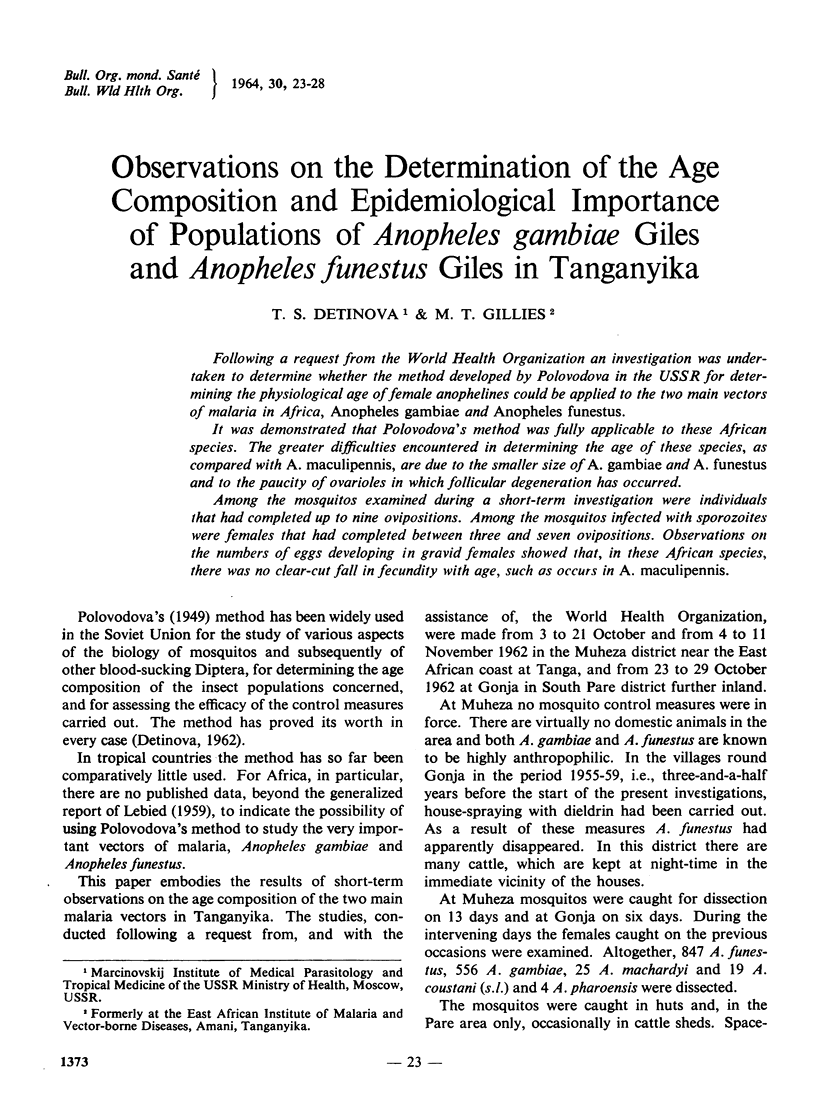
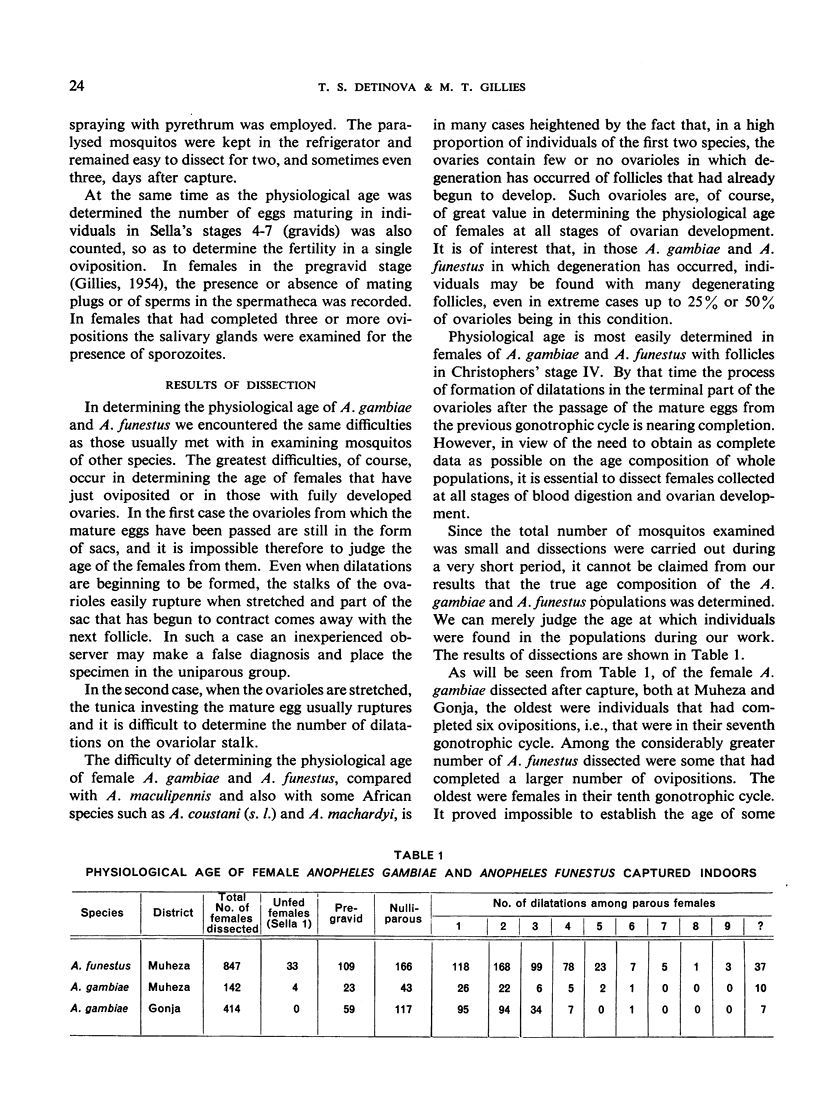
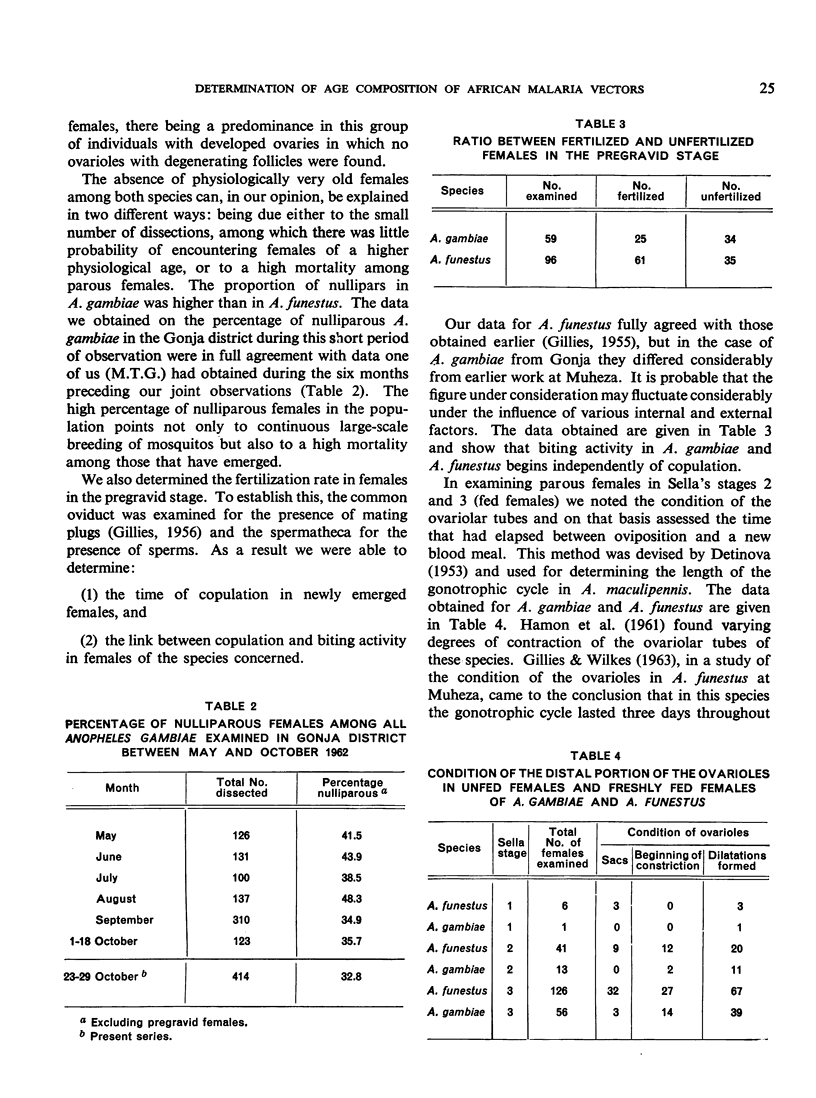

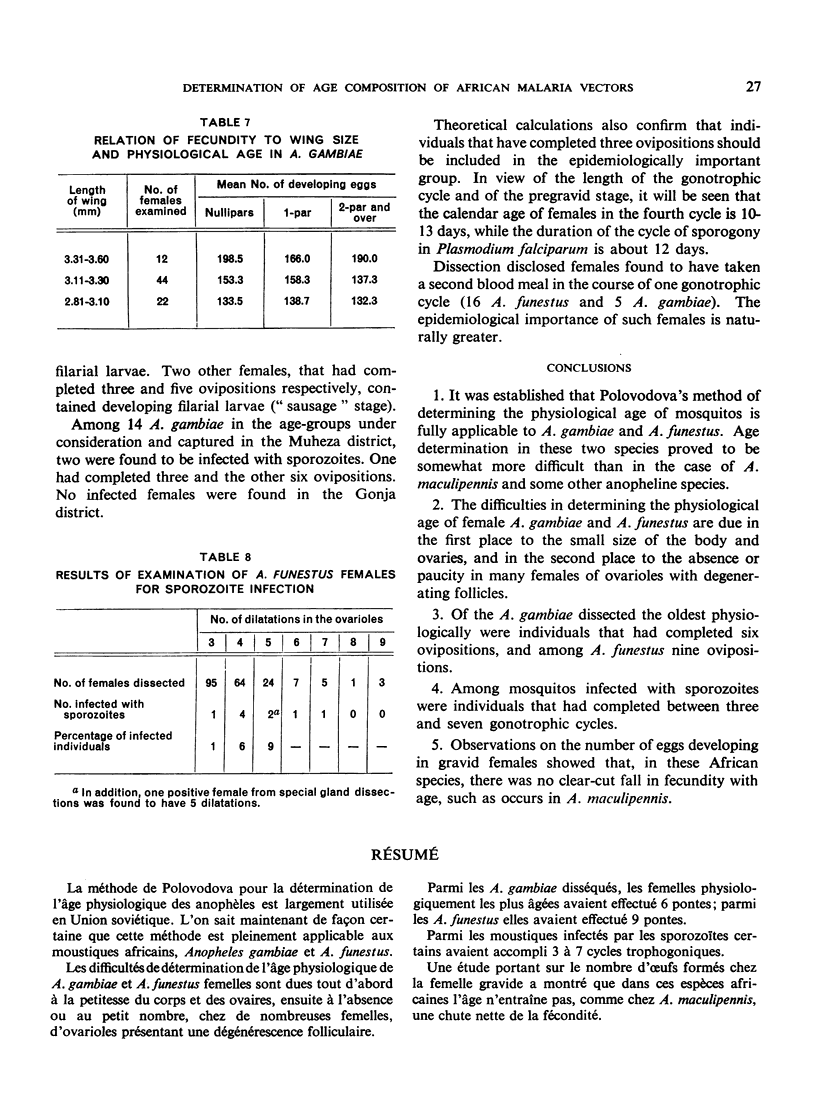
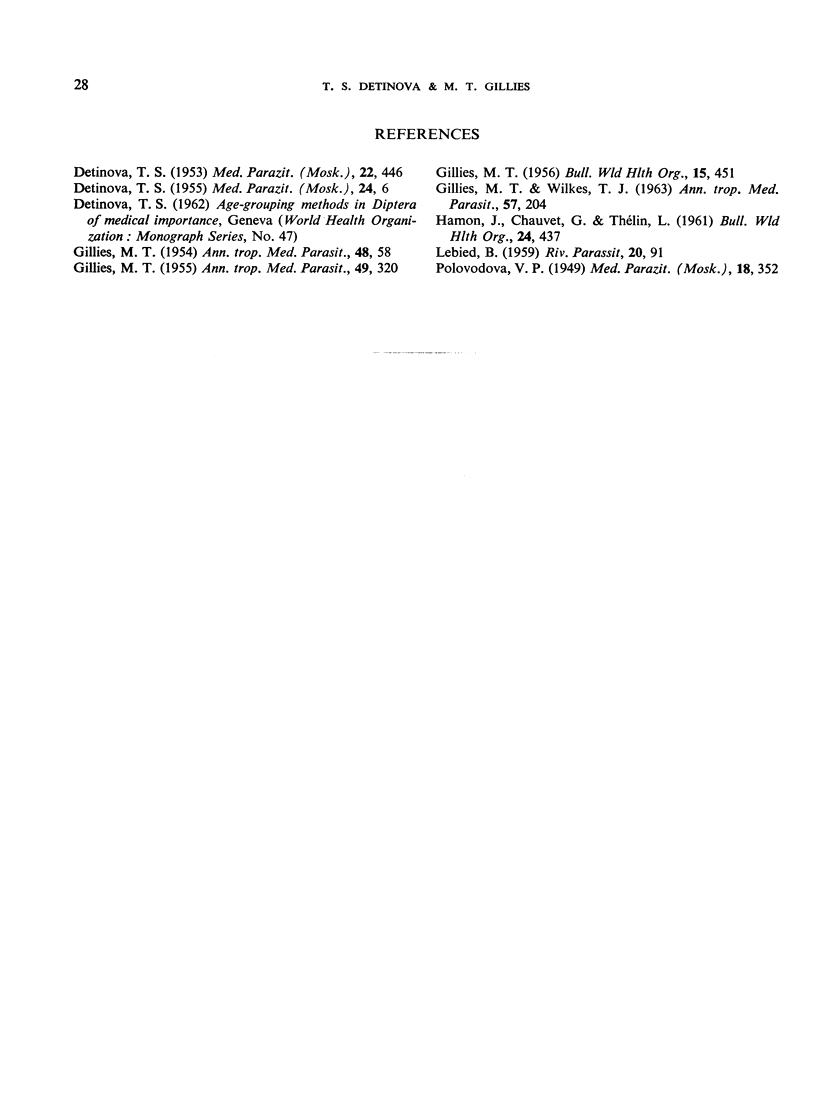
Selected References
These references are in PubMed. This may not be the complete list of references from this article.
- DETINOVA T. S. Plodovitost' obyknovennogo maliariinogo komara Anopheles maculipennis. Med Parazitol (Mosk) 1955 Jan-Mar;24(1):6–11. [PubMed] [Google Scholar]
- GILLIES M. T. A new character for the recognition of nulliparous females of Anopheles gambiae. Bull World Health Organ. 1956;15(3-5):451–459. [PMC free article] [PubMed] [Google Scholar]
- GILLIES M. T. The pre-gravid phase of ovarian development in anopheles funestus. Ann Trop Med Parasitol. 1955 Oct;49(3):320–325. doi: 10.1080/00034983.1955.11685681. [DOI] [PubMed] [Google Scholar]
- GILLIES M. T. The recognition of age-groups within populations of Anopheles gambiae by the pre-gravid rate and the sporozoite rate. Ann Trop Med Parasitol. 1954 Mar;48(1):58–74. doi: 10.1080/00034983.1954.11685599. [DOI] [PubMed] [Google Scholar]
- GILLIES M. T., WILKES T. J. OBSERVATIONS ON NULLIPAROUS AND PAROUS RATES IN A POPULATION OF ANOPHELES FUNESTUS IN EAST AFRICA. Ann Trop Med Parasitol. 1963 Jun;57:204–213. doi: 10.1080/00034983.1963.11686175. [DOI] [PubMed] [Google Scholar]
- HAMON J., CHAUVET G., THELIN L. [Observations on the methods of evaluation of the physiological age of female Anopheles]. Bull World Health Organ. 1961;24:437–443. [PMC free article] [PubMed] [Google Scholar]


